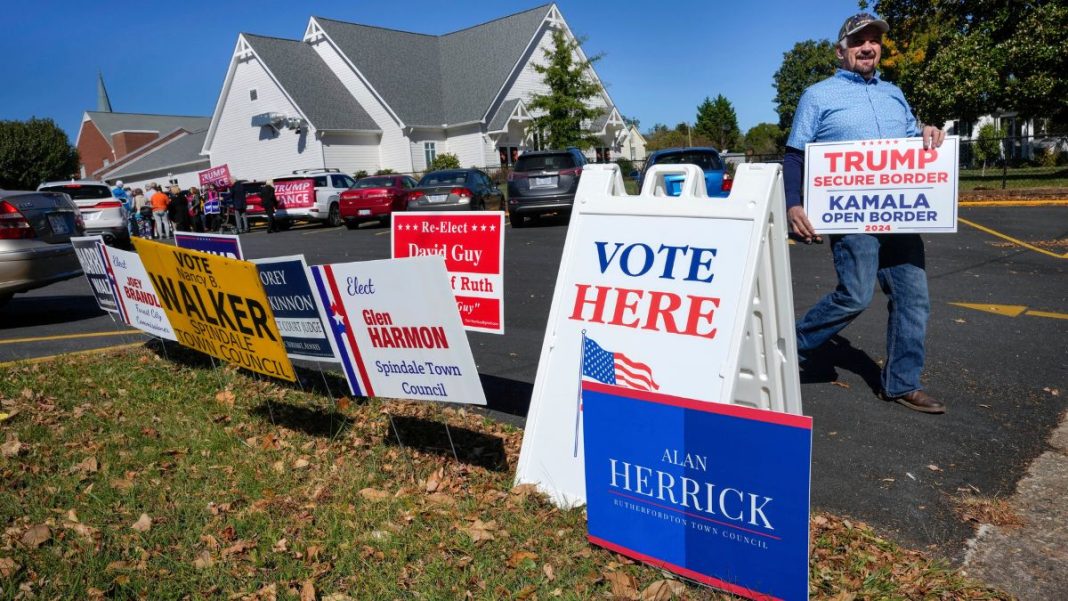Election Day Uncertainty: What to Expect in the 2024 Presidential Race
As the countdown to the U.S. Presidential election on November 5 continues, voters are bracing for what could be a nail-biting finish between Democrat Kamala Harris and Republican Donald Trump. With the race too close to call, the results may not be known for days after the polls close, echoing the dramatic events of the 2020 election. Voters and analysts alike are preparing for a repeat of the "red mirage" and "blue shift" phenomena that characterized the last election cycle.
In 2020, many states saw Trump leading on election night, only for Biden to eventually take the lead as mail-in ballots were counted in the following days. This year, the same dynamics could play out, particularly in battleground states where early voting and mail-in ballots are expected to heavily influence the outcome.
Early Voting Trends and Their Impact
The landscape of voting has shifted significantly since the last election, with Democrats increasingly favoring mail-in voting. This trend is largely a response to Trump’s unfounded claims about the integrity of mail ballots, which has led many Democrats to embrace early voting as a safer option. As a result, the initial results on election night may skew in favor of Harris, only for Trump to potentially close the gap as more Election Day votes are counted.
State-by-State Breakdown
Arizona: With nearly 90% of voters casting their ballots early in 2020, Arizona is a key player in this election. Election officials can start processing mail ballots upon receipt, but results won’t be released until an hour after polls close. Expect early returns to favor Harris, with a possible shift toward Trump as Election Day votes are tallied.
Georgia: Early in-person voting is expected to account for 65-70% of ballots. While absentee ballots can be processed ahead of time, counting them must wait until Election Day. All votes are expected to be reported by midnight, but ballots from overseas and military voters could delay the final count.
Michigan: New rules allow for early in-person voting and processing of mail ballots before Election Day. This should help speed up reporting compared to 2020, when a "red mirage" led to confusion and claims of fraud.
Nevada: Changes implemented since 2020 aim to expedite vote counting. Counties can start processing mail ballots weeks in advance, but late-arriving ballots could still favor Democrats, potentially shifting the results in Harris’s favor.
North Carolina: Early processing of mail ballots means initial results will likely show Harris in the lead. However, Election Day votes could change the narrative, and absentee ballots arriving after the election could prolong the uncertainty.
Pennsylvania: Known for its delays in 2020, Pennsylvania has new laws requiring counties to announce how many mail ballots remain to be counted. Expect a similar pattern where Trump may lead initially, but Harris could catch up as mail ballots are tallied.
Wisconsin: Like Pennsylvania, Wisconsin does not allow early counting of mail ballots, which could lead to significant reporting delays. The state’s largest cities often report large batches of votes at once, which could create dramatic shifts in the results.
The Bottom Line
With so many variables at play, it’s clear that the results of the 2024 election may not be finalized on November 5. Voters should prepare for a potentially drawn-out process as ballots are counted and results are tallied. As we’ve seen in previous elections, the narrative can shift dramatically in the days following Election Day, and both candidates are likely to face scrutiny and speculation as the counting unfolds.
In the meantime, voters are encouraged to stay informed and engaged, as the outcome of this election will shape the future of the nation. Whether you’re rooting for Harris or Trump, one thing is certain: this election promises to be one for the history books.



